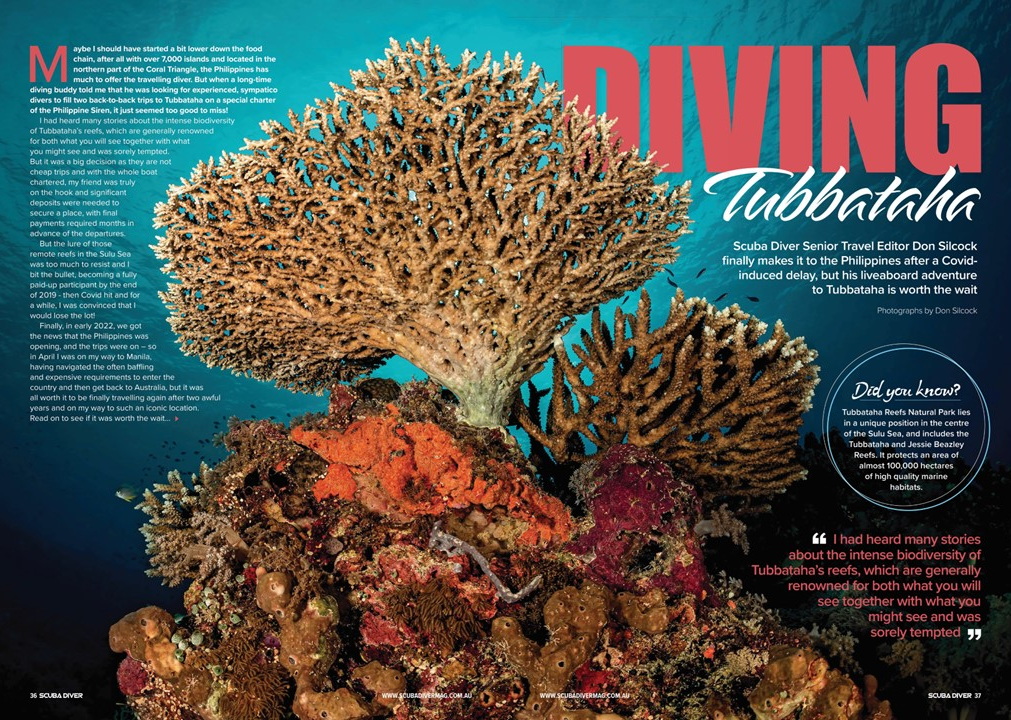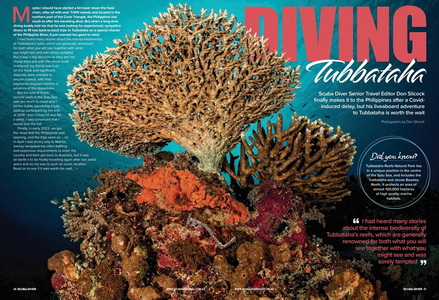Diving Tubbataha… Maybe I should have started a bit lower down the food chain. After all with over 7000 islands and located in the northern part of the Coral Triangle, the Philippines has much to offer the traveling diver.
But when a long-time diving buddy told me that he was looking for experienced, sympatico divers to fill two back-to-back trips to Tubbataha on a special charter of the Philippine Siren it just seemed too good to miss! I had heard many stories about the intense biodiversity of Tubbataha’s reefs. Which are generally renowned for both what you will see, together with what you might see… and I was sorely tempted. But it was a big decision as they are not cheap trips.
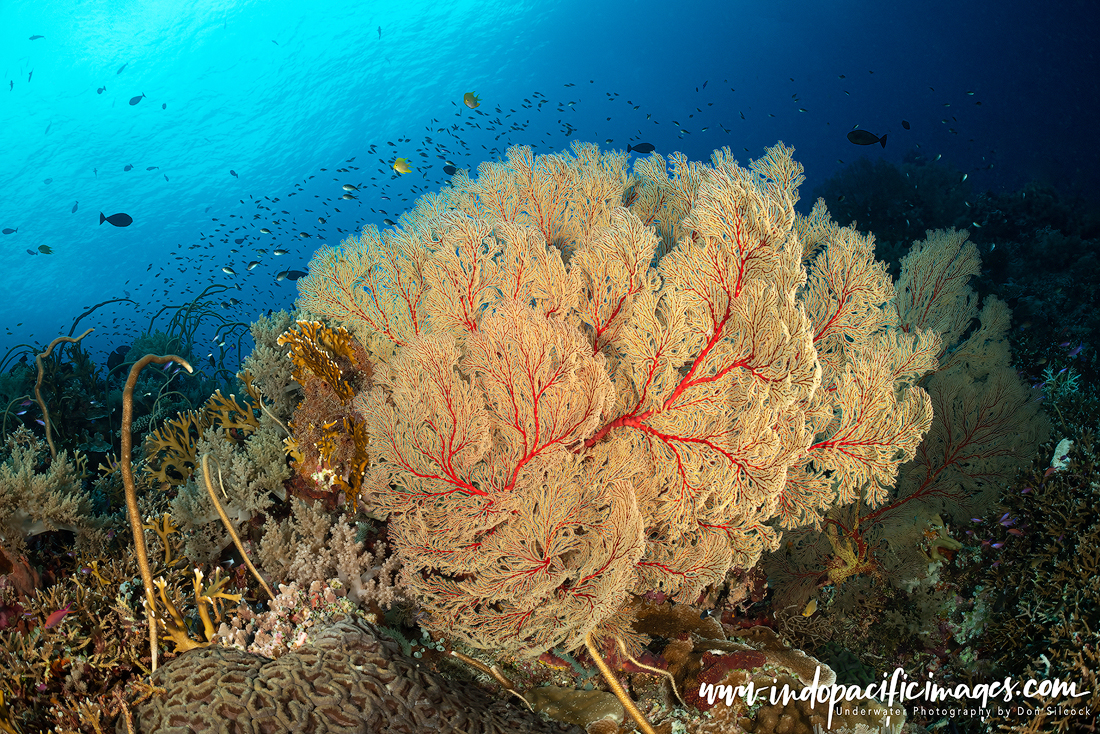
And with the whole boat chartered my friend was truly on the hook. So significant deposits were needed to secure a place with final payments required months in advance of the departures. But the lure of those remote reefs in the Sulu Sea was too much to resist… So I bit the bullet becoming a fully paid-up participant by the end of 2019. Then Covid hit and for a while I was convinced that I would lose the lot!
Then in early 2022 we got the news that the Philippines was opening, and the trips were on. So in April I was finally on my way to Manila. Having navigated the often baffling and expensive requirements to enter the country and then get back to Australia. But it was all worth it to be traveling again after two awful years and on my way to such an iconic location.
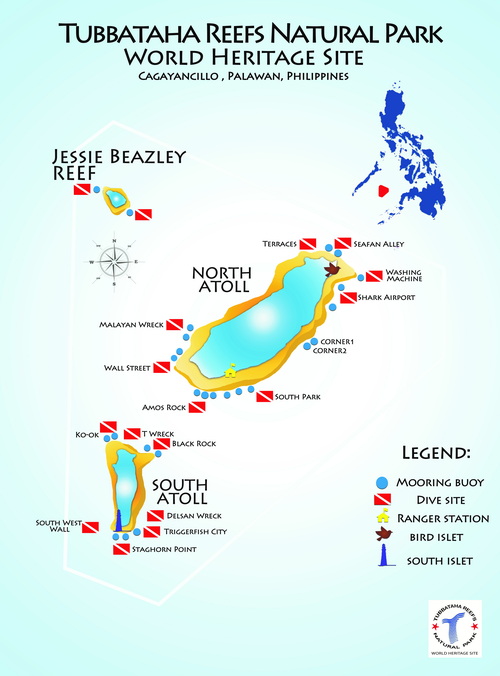
Diving Tubbataha – Can You Spell That Again?
Pronounced Toobahtaaha… the name means “long reef exposed at low tide” in Sinama – the language of the nomadic Sama-Bajau sea gypsies of the southern Philippines.
The Sama-Bajau are believed to have first discovered the area. When they made that discovery is not known, but one can imagine their joy to find such a rich and reliable source of food!
Physically the TRNP (Tubbataha Reefs National Park) consists of two atolls and one coral reef. Which are located in the middle of the Sulu Sea – effectively the core of the Philippine archipelago.
And those “exposed reefs” are the highest tips of the many extinct underwater volcanoes and mountains that form the Cagayan Ridge, which rises up from the 3000m depths of the Sulu Basin.
The two atolls are (rather prosaically…) named the north and south atolls. While the reef is named after a long forgotten English mariner named Jessie Beazley
Diving Tubbataha – What is so Special About Tubbataha?
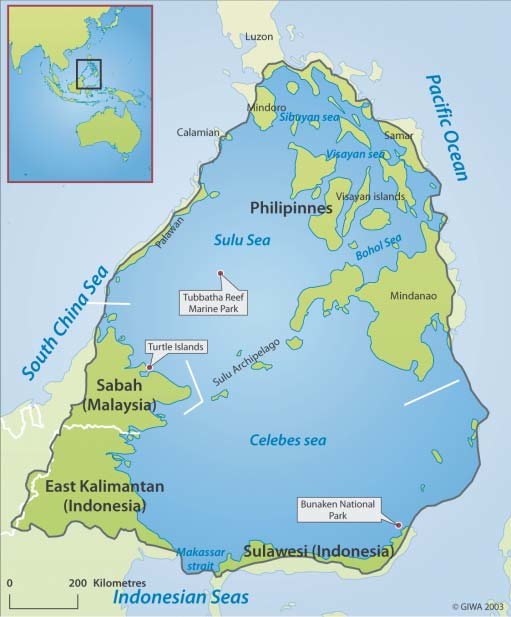
There are a few things that are really special about Tubbataha. Which, combined together, create something that verges on the unique!
Let’s start with the Sulu Sea. The 260,000 km² body of water that is bounded on three sides by the Philippine archipelago. And, in the south by the province of Sabah in Malaysian Borneo and Indonesia’s North Sulawesi.
Marine biologists classify the Sulu Sea as a Large Marine Ecosystem (LME). Because the area is extremely rich in marine biodiversity. With some 600 species of fish, 360 species of corals, 11 species of sharks and rays and 13 species of dolphins & whales found there.
With all that concentrated biodiversity nurtured and sustained by the fertile currents of the Pacific Ocean from the east. Together with the rich deep-water upwellings produced as those currents flow through the Sulu Sea.
Secondly Tubbataha is some 150km from the nearest landfall on the large, narrow island of Palawan. Which, up to the 1980’s, meant that is was well beyond the range of traditional fishing boats. Plus with no fresh-water available, permanent habitation was impossible.
So, the isolated atolls evolved into almost a marine version of the Garden of Eden with almost only natural predation occurring.
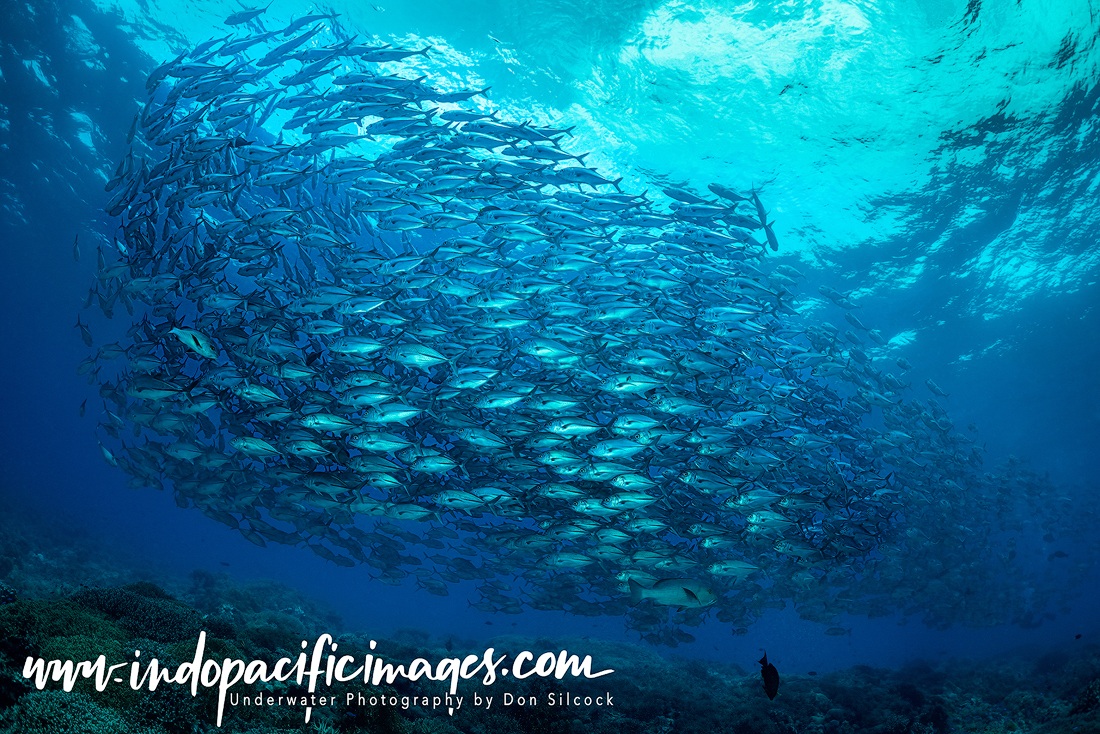
Diving Tubbataha – The 1980’s…
Then the early 1980’s saw the arrival of first motorized fishing boats… Driven from the more accessible fishing grounds in the Sulu Sea by over-fishing and the dramatic depletion of fish stocks. The rich bounty of Tubbataha’s atolls made the long and perilous journey worth the risk!
But to maximise their returns those boats also introduced cyanide and dynamite fishing. And by the mid 1980’s that Garden of Eden was no longer what nature had made it.
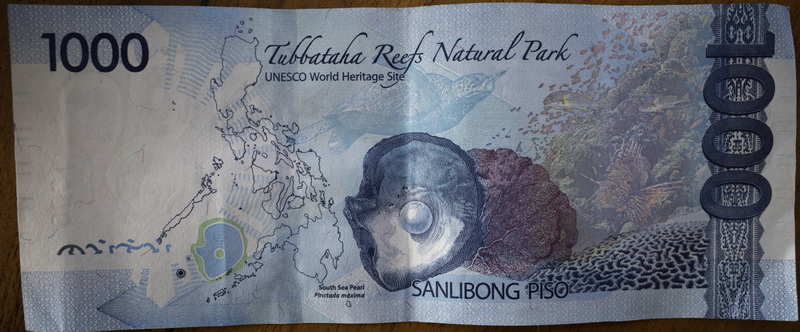
Good governance was rarely associated with the Philippines in the 1980’s… But through the efforts of a few key, highly motivated individuals the government was stirred into action.
In 1988 then President Corazon Aquino designated Tubbataha a national marine park. The first in the country and five years later UNESCO inscribed it as a World Heritage Site.
Nature is an incredibly powerful thing when we humans let it do its job. And by 2015 scientific studies of those badly decimated reefs on the north and south atolls, plus Jessie Beazley reef, had been restored to a near-pristine and truly natural state!
So effective has been the management of the TRNP it is often referred to as a role-model for similar initiatives elsewhere.
Diving Tubbataha
If you like tropical reef diving and who doesn’t… Imagine, if you will, rolling backwards into blue water that is so clear, the visibility seems to stretch out to infinity. Then arrayed below you on the upper reef margin are vast rolling dunes of staghorn coral. With schools of resident anthias swimming up into the light and then darting back down for protection as an endangered green turtle forages for food among the branches.
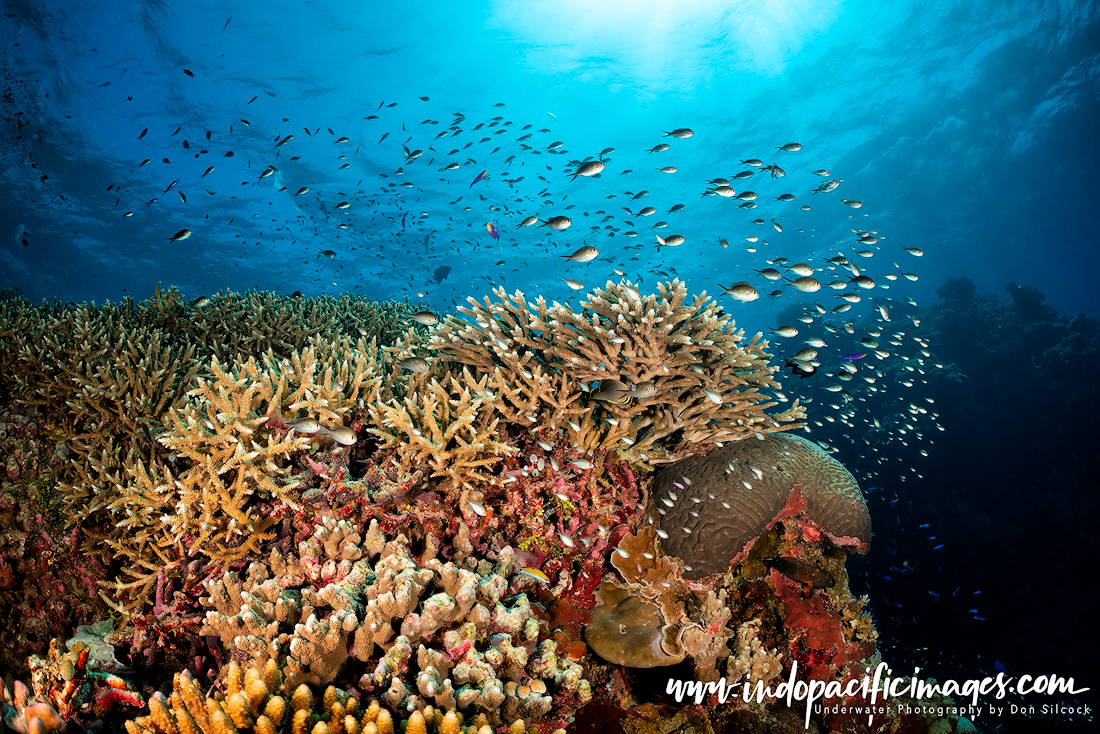
Then head down to about 15m where the margin ends, and the reef slope begins its descent into the depths of the Sulu Sea. Arranged to perfection along the slope are rows of huge gorgonian fans that stretch out into the current and feed on the passing nutrients. Each one a mini ecosystem of its own with permanent residents like sea stars, brittle stars, ghost gobies, pygmy seahorses and the pygmy’s nemesis the long-nosed hawkfish.
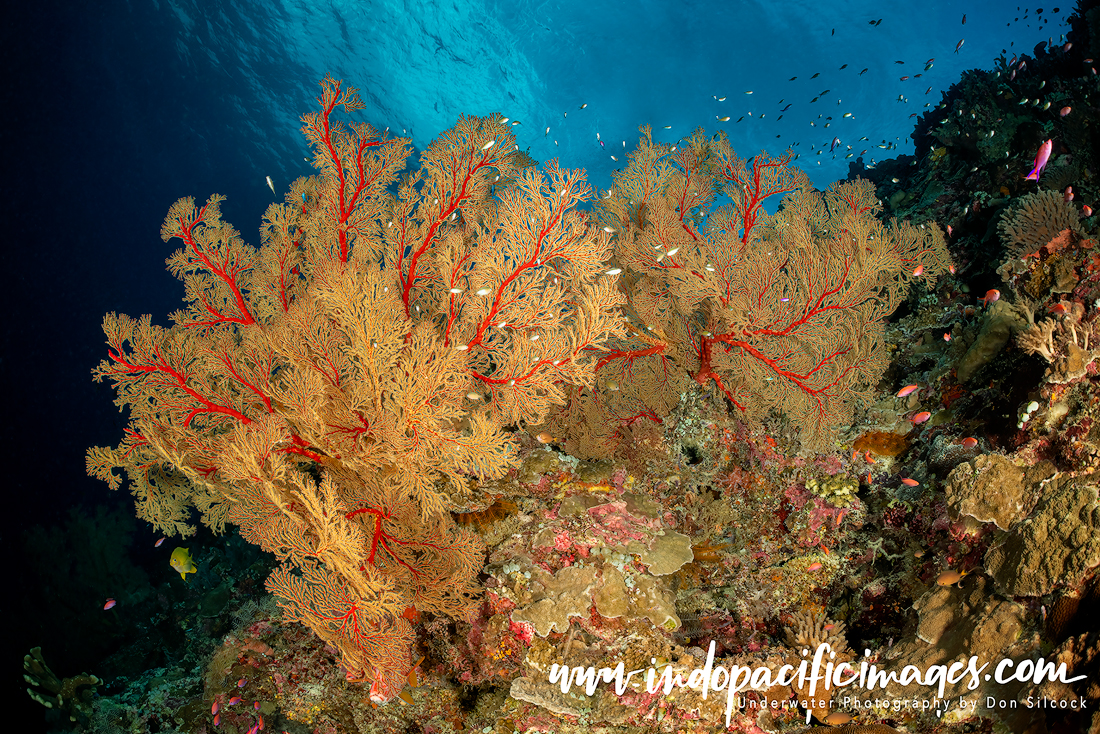
Look up and there is a good chance of seeing the massive schools of jacks that patrol the upper parts of the reef. And then out into the blue where schools of barracuda move up and down the reef wall. Concentrate on the blue and you will see large groups of black-tip reef sharks hunting in the current. Often with individual sharks working tag-team with a giant trevally.
Diving Tubbataha – Look Up or Down?
At this point you tend to have to make a decision… Stay focused on the blue on the chance of a pelagic encounter with one of the regular open-water animals that visit Tubbataha. Such as whale sharks, giant oceanic mantas and tiger sharks. Or you stay focused on the beautiful and wonderfully biodiverse reef slope because, believe me, it’s hard to do both!
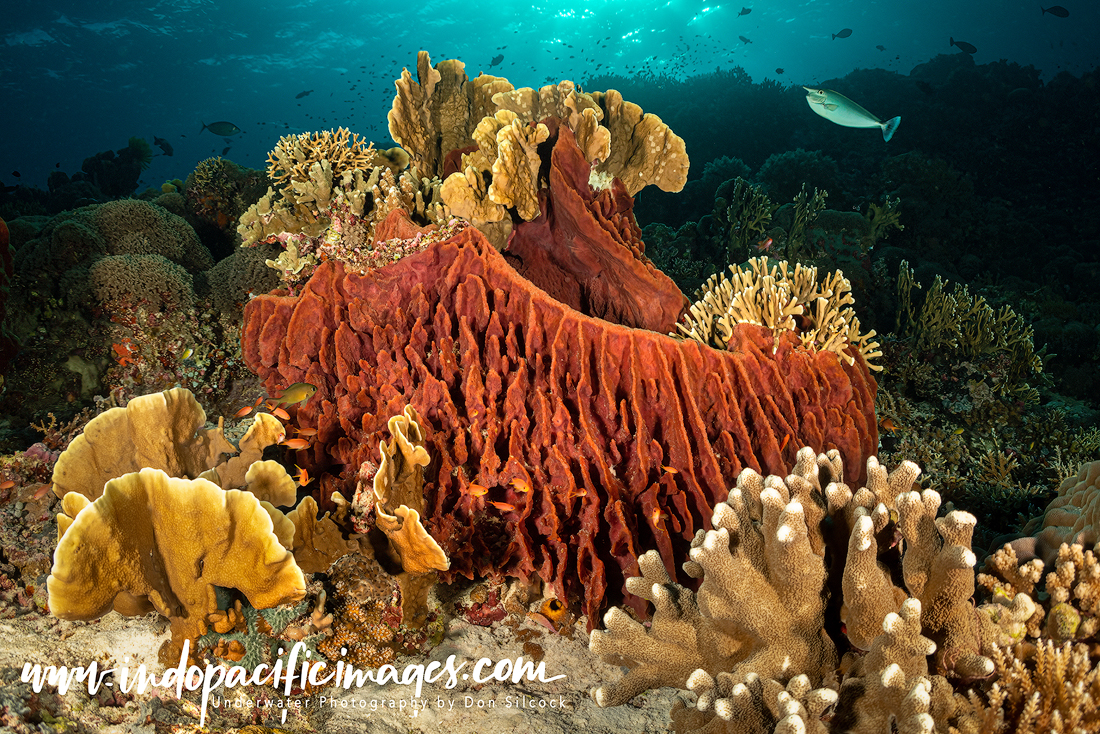
And, that’s just my description of one of my personal favourite sites; Staghorn Point on the southern tip of the South Atoll. There are another 16 other sites to choose from at Tubbataha and of them at least 7 are absolutely world-class in terms of their biodiversity.
How to Dive Tubbataha
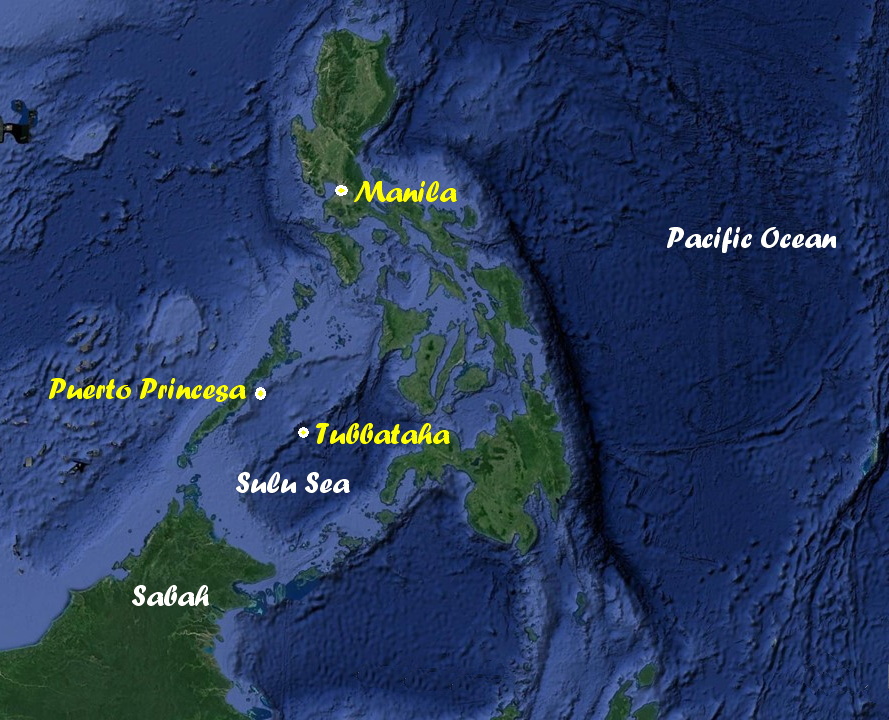 Stating the obvious… From a liveaboard, as there is simply no other way to do it. And there are currently around 18 registered vessels all operating from Puerto Princesa mid-way down the island of Palawan.
Stating the obvious… From a liveaboard, as there is simply no other way to do it. And there are currently around 18 registered vessels all operating from Puerto Princesa mid-way down the island of Palawan.
But the season is limited to about three months from mid-March to mid-June. Because of the tropical storms from the November to March northeast monsoon and the July and October southwest monsoon.
During that three month season though the diving conditions are usually excellent with clear skies, calm seas and visibility up to 50m!
To get to Puerto Princesa (PPS) I flew Qantas from Sydney to Manila. Overnighted near the airport and caught a Philippine Airways Express flight the next day. With another overnight stay required before getting on the Philippine Siren.
In Summary…
There are certain iconic locations around the world where, when I have been fortunate to experience them, a constant thought runs through my mind… There must have been so many places like this once!
Tubbataha is a stunning example of just how powerful nature is in creating such Gardens of Eden and what can happen if we humans get out of the way and let it restore that beauty!
What you will see at Tubbataha are superb reefs in pristine condition. That are bursting at their seams with a veritable smorgasbord of marine life. What you might see are those passing pelagics… Which roam the Sulu Sea and pass like ships in the night!
Was it worth the wait and the expense? Well for me it certainly was and was the perfect remedy for two years of Covid induced half-life!
Scuba Diving ANZ Diving Tubbataha Article
Scuba Diver ANZ have published a six-page article of mine on Diving Tubbataha and you can download a copy on the link. Also, check out the follow-up article on Conserving Tubbataha.
